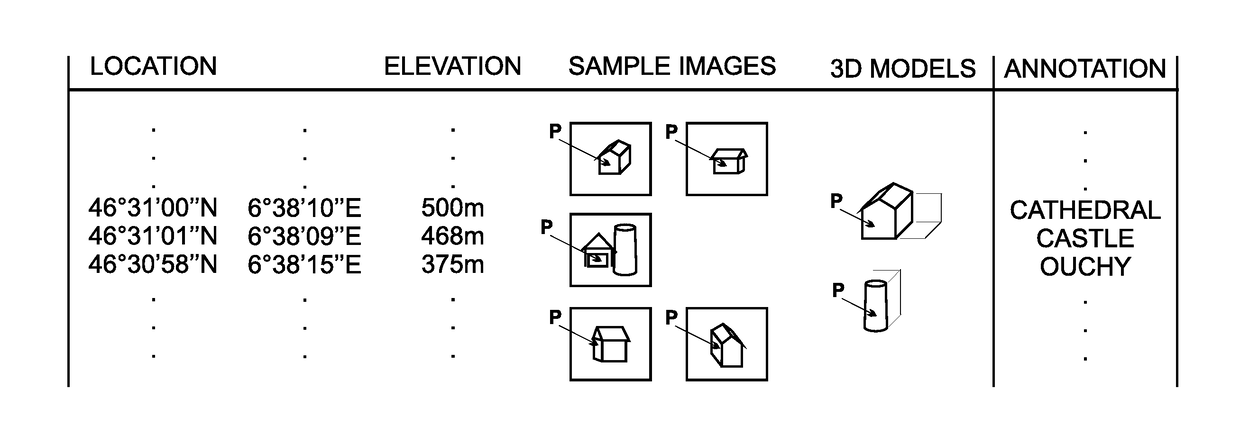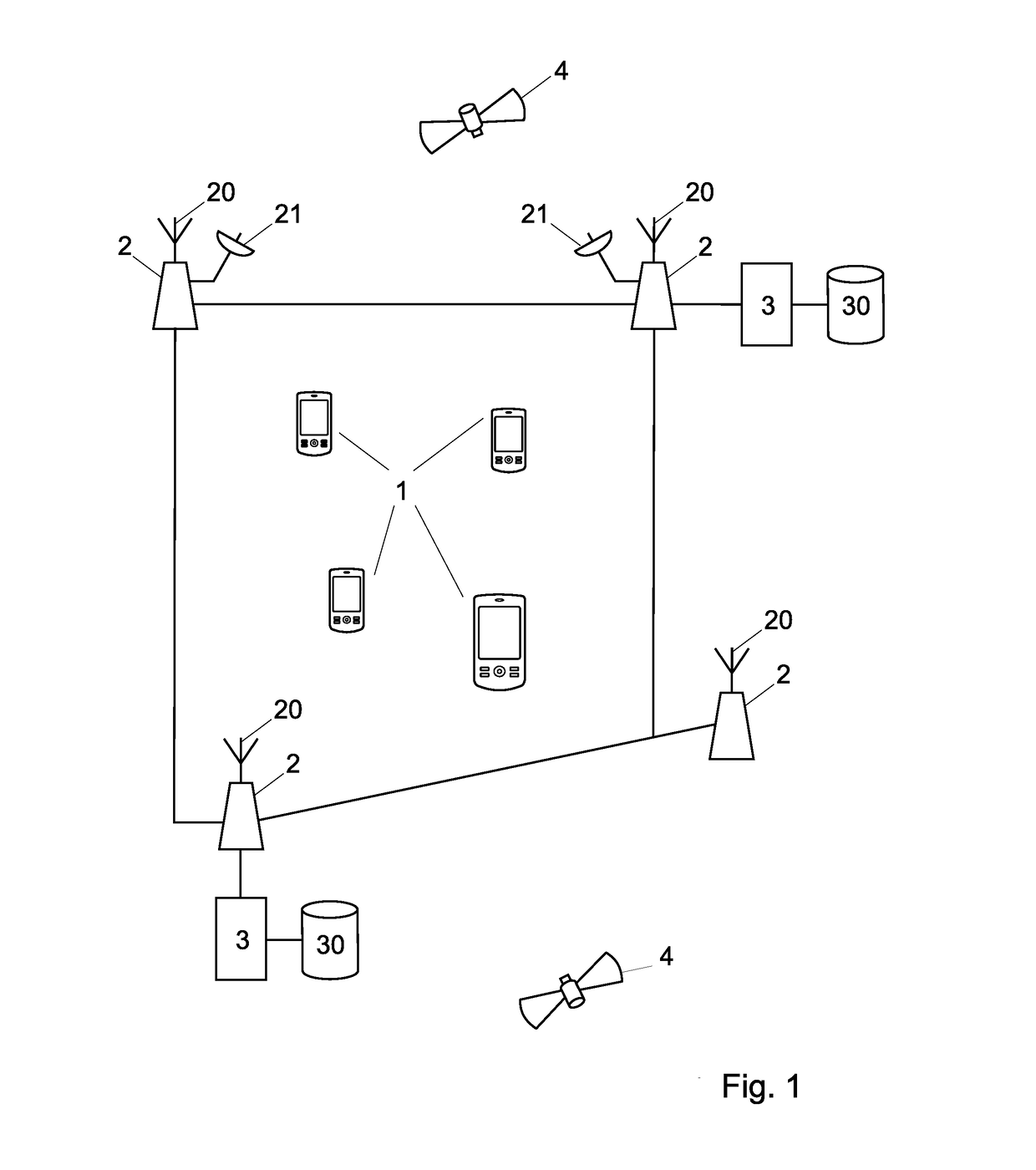Image annotation on portable devices
a portable display device and image technology, applied in the field of image annotation on portable display devices, can solve the problems of high bandwidth requirements for transmitting images, delay in computing annotations in the server, etc., and achieve the effects of minimizing communication costs, minimizing communication costs, and minimizing communication costs
- Summary
- Abstract
- Description
- Claims
- Application Information
AI Technical Summary
Benefits of technology
Problems solved by technology
Method used
Image
Examples
Embodiment Construction
[0060]Different techniques can be used for image acquisition in an image / video annotation system. A technique can be based on the use of a sensor on the portable annotation device, for example, for the sensor to provide information concerning device position and orientation. Available sensors are characterized by differing precision and reliability. For example, the GPS system allows determining position with a precision dependent on the number of visible satellites. However, when the device is inside a building GPS determination becomes unreliable and a requisite position has to be acquired using an alternative, possibly less precise type of sensor, such as determination of position from a mobile phone network infrastructure.
[0061]From the sensor information, an annotation system can infer the scene observed by the annotating device and retrieve from a database a set of visible salient objects and their annotations. Sensor information can be used further to map the set of salient o...
PUM
 Login to view more
Login to view more Abstract
Description
Claims
Application Information
 Login to view more
Login to view more - R&D Engineer
- R&D Manager
- IP Professional
- Industry Leading Data Capabilities
- Powerful AI technology
- Patent DNA Extraction
Browse by: Latest US Patents, China's latest patents, Technical Efficacy Thesaurus, Application Domain, Technology Topic.
© 2024 PatSnap. All rights reserved.Legal|Privacy policy|Modern Slavery Act Transparency Statement|Sitemap



